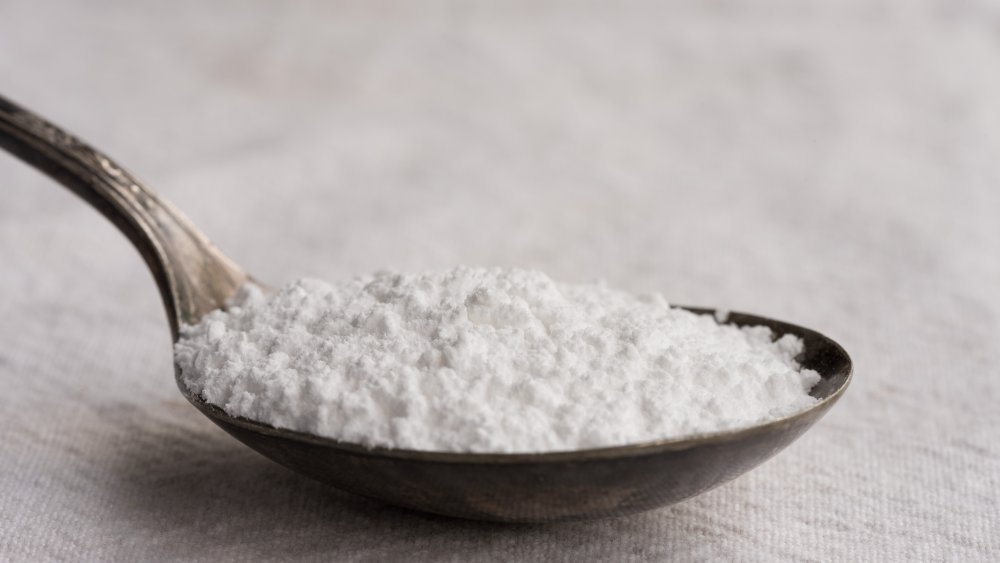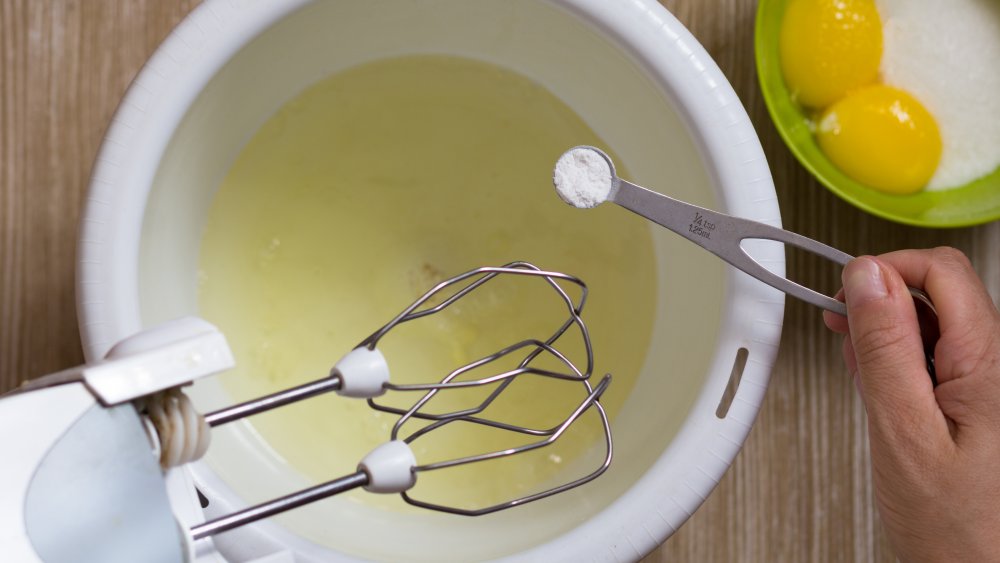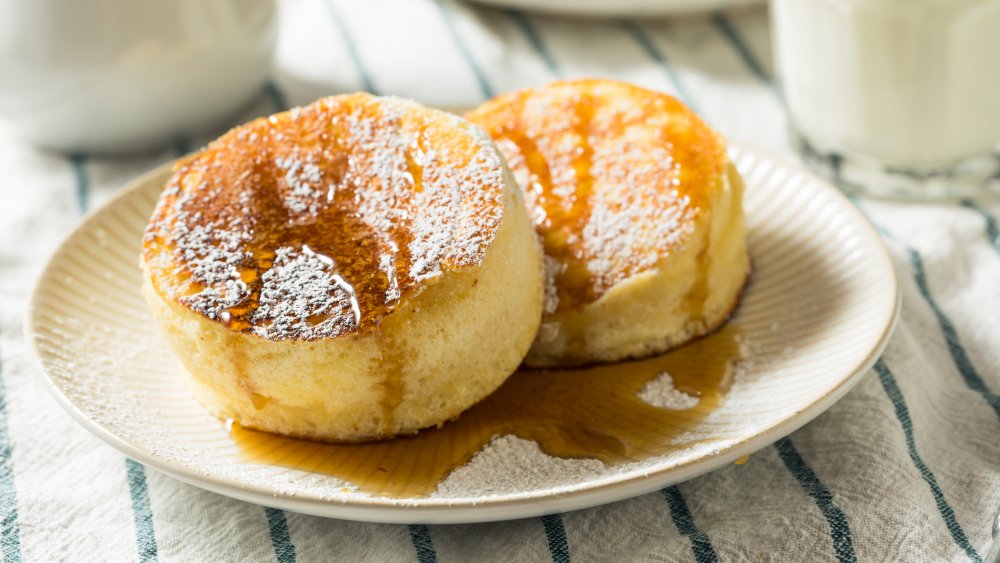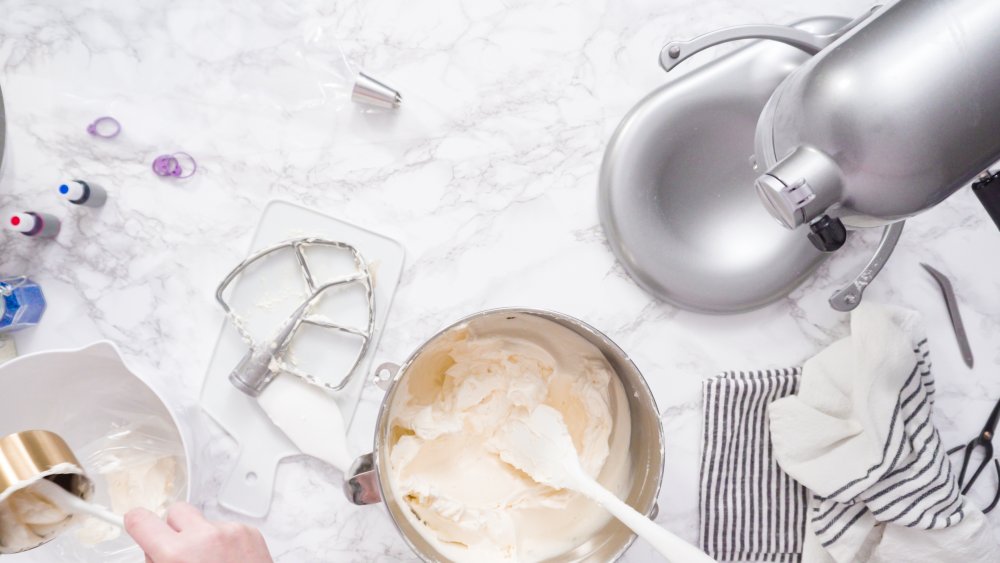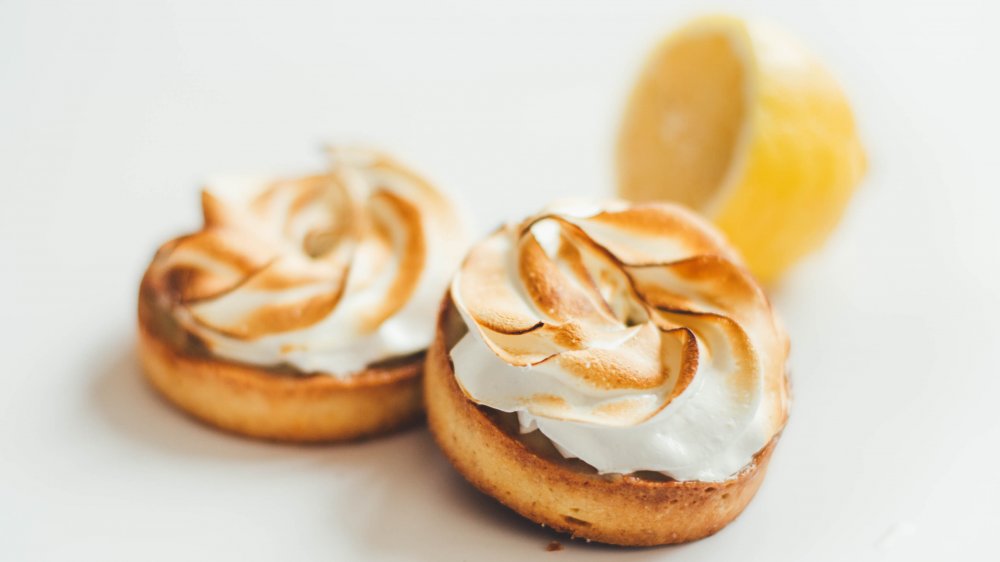What Is Cream Of Tartar Really?
Cream of tartar is one of those mystery baking products that no one who isn't a professional baker really seems to understand, much less use. You may have seen it in the store, or perhaps even in somebody's kitchen, and you may have vaguely wondered, "Does this have anything to do with tartar sauce?" The answer to this question is short and easy: no. Tartar sauce is made up of mayonnaise mixed with other stuff such as pickles, onions, capers, olives, or even hard-boiled eggs, while cream of tartar is the not-so-scientific name of a compound more formally known as potassium bitartrate or potassium hydrogen tartrate (via HuffPost). Interestingly enough, this compound is a natural byproduct of wine-making, as it forms on the inside of wine barrels (via Food52).
You may be relieved to know that cream of tartar also has no relation to that gunk your dentist scrapes off your teeth or a certain horde that swept across Europe and helped to spread a deadly plague throughout Italy (via Grunge). Nope, cream of tartar is just an innocent, if somewhat obscure, baking aide.
Cream of tartar adds stability
Cream of tartar is perhaps best known for its ability to stabilize egg whites and help them keep their shape even when cooked. Cream of tartar is necessary for making perfect meringues, cloud bread, angel food cakes, souffles, and any other recipe that relies on beaten egg whites. Even if a recipe does not specify cream of tartar, California pastry chef Alice Medrich suggests adding 1/2 teaspoon per cup, or 1/4 teaspoon for every four egg whites. She also suggests adding 1/4 teaspoon cream of tartar to each cup of heavy cream before you whip it, as it can also help keep whipped cream from deflating.
Should you need to substitute cream of tartar used as a stabilizer, it can be replaced with an equal amount of lemon juice or vinegar. This suggestion was made for cooked products involving egg whites, however, so you might want to omit the vinegar (or skip this substitution entirely) if using with whipped cream.
Cream of tartar brings leavening
While levity can lighten up an awkward social situation, leavening is what can lighten up pancakes, cookies, and other yeast-free baked goods. Cream of tartar, when used as a leavening agent, is used in combination with baking soda. Together, these two products create a chemical reaction that helps to bring on the fluffy.
Should you not happen to have any cream of tartar on hand, there's an easy substitution — just replace both the soda and the cream of tartar with equal amounts of baking powder (e.g. replacing one half teaspoon baking soda and one teaspoon cream of tartar with a teaspoon and a half of baking powder). This shouldn't alter your recipe in the slightest since baking powder pretty much consists of baking soda plus cream of tartar.
Cream of tartar keeps crystals from forming
Sure, crystals are pretty, but unless you're making rock candy, they're usually something best kept out of the kitchen. A little cream of tartar added to your frostings, icings, or syrups can prevent the sugar from crystallizing, with the result that your frostings will be fluffier and your syrups smoother.
If you do not have cream of tartar on hand, you can easily leave it out of any sugar-based recipe that calls for it, since the taste won't be affected. In the case of a syrup that crystallizes, all you'd need to do would be to reheat it to melt the crystallized sugar. If it's an icing that crystallizes — well, just enjoy the extra crunch.
Does cream of tartar ever go bad?
While some baking ingredients, such as baking powder, do have expiration dates, cream of tartar really doesn't ever expire. As long as you've kept your cream of tartar in an airtight container so as to keep out any moisture, creepy-crawlies, or (eww) rodent infestations, it should last approximately forever.
If you're just not sure of the age or provenance of that ancient tin of cream of tartar you maybe inherited from grandma, though, there are certain steps you can take to make absolutely sure it's still good. First of all, check how it looks and smells. It should look like white powder, no dark flecks (we don't even want to speculate what those might be), not all fused into a solid lump, and with no mold or other ickiness growing on the surface. It should also have not much of an odor, at all. If anything looks or smells suspicious, toss it out.
If all appears okay, but you still suspect your cream of tartar might be really old and no longer up to the job, the Does It Go Bad? blog presents this simple potency test: stir half a teaspoon into a half cup of warm water, then add a pinch of baking soda. If the water starts foaming, your cream of tartar is still ready to leaven, stabilize, and otherwise work its kitchen magic.
